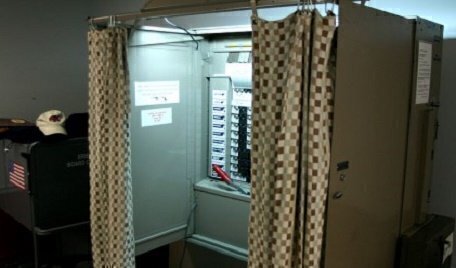In early November, the Supreme Court will take up a potentially significant case about the ability of states to remove voters from registration lists despite some requirements tied to federal laws.
 The case of Husted v. A. Philip Randolph Institute considers a conflict between federal voting statutes and state-based programs to maintain voter registration lists by removing inactive voters. Ohio's program removes people from its list of registered voters if they don't respond to a notification after four years or vote again in that period.
The case of Husted v. A. Philip Randolph Institute considers a conflict between federal voting statutes and state-based programs to maintain voter registration lists by removing inactive voters. Ohio's program removes people from its list of registered voters if they don't respond to a notification after four years or vote again in that period.
In February 2017, Ohio Secretary of State Jon Husted filed a petition with the Supreme Court after the state lost a decision in the federal Sixth Circuit Appeals Court. Ohio believes that under the National Voter Registration Act of 1993 (or NVRA) and the Help America Vote Act of 2002 (or HAVA), it can start a “supplemental” process of voter purging for a person who “has not voted or appeared to vote in 2 or more consecutive general elections for Federal office.”
Since 1994, Ohio has used two voter-role maintenance processes. In one process, the state looks at postal change-of-address information; under the second process, it looks at voter inactivity as evidence that someone has moved, but not notified the post office. The state then notifies a voter who is inactive for more than two years that they have to confirm their registration by returning a pre-paid mail form or by using an Internet confirmation page. If the voter doesn’t confirm their registration or doesn't vote over the next four years, they lose their voter registration, and need to apply again to vote.
The Philip Randolph Institute challenged the state’s policy in 2016, claiming the voter-purging efforts eliminated a disproportionate number of lower-income and minority voters from the election process. It also contested Ohio’s interpretation of the federal laws that permitted voter inactivity as the “trigger” mechanism for maintaining voter rolls.
In federal district court, the state of Ohio won the first legal challenge, with the court finding the federal law allowed for a supplemental process of notifying inactive voters. But the Philip Randolph Institute prevailed at the divided Sixth Circuit Appeals Court. The majority in the Sixth Circuit believed the federal law didn’t allow Ohio to first use voter inactivity as a reason to start the notification and voter-purge process, and a policy that removed voters “solely” for non-voting violated the federal law.
Ohio asked the Supreme Court to take the case for several reasons, including the Sixth Circuit decision’s impact on other states that use similar voter-purge policies and the Court accepted the case in May 2017. So far, the Trump administration and 17 states have filed friend of the court briefs supporting Ohio, while the NAACP, Common Cause and former attorney general Eric Holder field briefs supporting the Randolph Institute. Arguments will be held Wednesday, November 8, at the Supreme Court.







